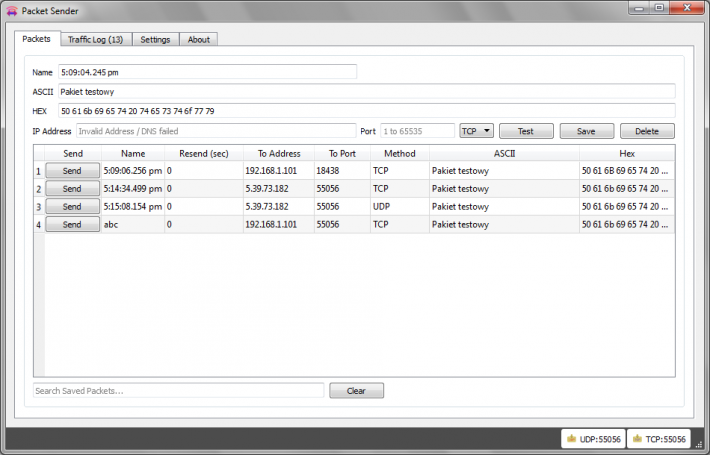

Let’s consider a single VLAN with a single source and the rest being receivers.
Packet sender tutorial mac#
Reserved IPv6 multicast addresses are also defined for use by certain protocols such as routing protocols, including OSPFv3, EIGRP, and RIP, and also for other protocols such as PIM, which we’ll talk about shortly.Īt Layer 2, multicast deals with MAC addresses instead of IP addresses. Some have IPv4 equivalents, while others are specific only to IPv6. Like IPv4, there are specific IPv6 multicast ranges used for particular purposes. When using IPv6, it is the ff00::/8 prefix that is used. A router will never forward packets with a destination IP address from this range. The Link Local Addresses range is reserved for the network routing protocols on a local network segment. The source IP address of a multicast packet will always be a unicast IP address, and the destination IP address will be a multicast address. The downstream interface is called the outgoing interface as a matter of fact, most vendors use the terms “incoming” and “outgoing” in their CLI outputs. The upstream interface is often called the incoming interface. The interface leading to the receivers is the downstream interface (a routing device can have multiple downstream interfaces). The distribution tree has the source as its root.įrom the routing device point of view, the interface leading to the source is the upstream interface. The hosts interested in receiving the data flow must join the group using the Internet Group Management Protocol (IGMP).Īt a high level, the purpose of the routing device in the IP multicast network is to build a distribution tree that connects receivers to sources. A multicast group is a set of receivers interested in receiving a particular set of data traffic. IP Multicast has at its core the concept of a group. IP Multicast has its own set of acronyms and terms that apply to routing devices and networks. It is essential to keep the flow of unwanted traffic at a minimum-a host that does not want to receive multicast traffic should receive zero (or close to zero) multicast messages. The routing devices must prevent routing loops.

Multicast routing devices replicate the multicast packets from the incoming interface and send copies of them on the outgoing interfaces. The multicast routers in turn will forward those multicast packets to all of the multicast receivers that are registered to that multicast address. The routing devices' job is to sit between the sources and receivers to determine the correct logical network topology for routing from the unicast and multicast points of view so they can correctly route the traffic.įor example, if you have a video server acting as a multicast source that is broadcasting a live video feed, that stream of traffic can be sent only once by the server in a single stream of packets to a particular multicast address. With multicast, only the destinations that explicitly indicated that they want to receive the multicast traffic receive the messages sent. This type of communication is present in videoconferencing or online gaming applications.


 0 kommentar(er)
0 kommentar(er)
